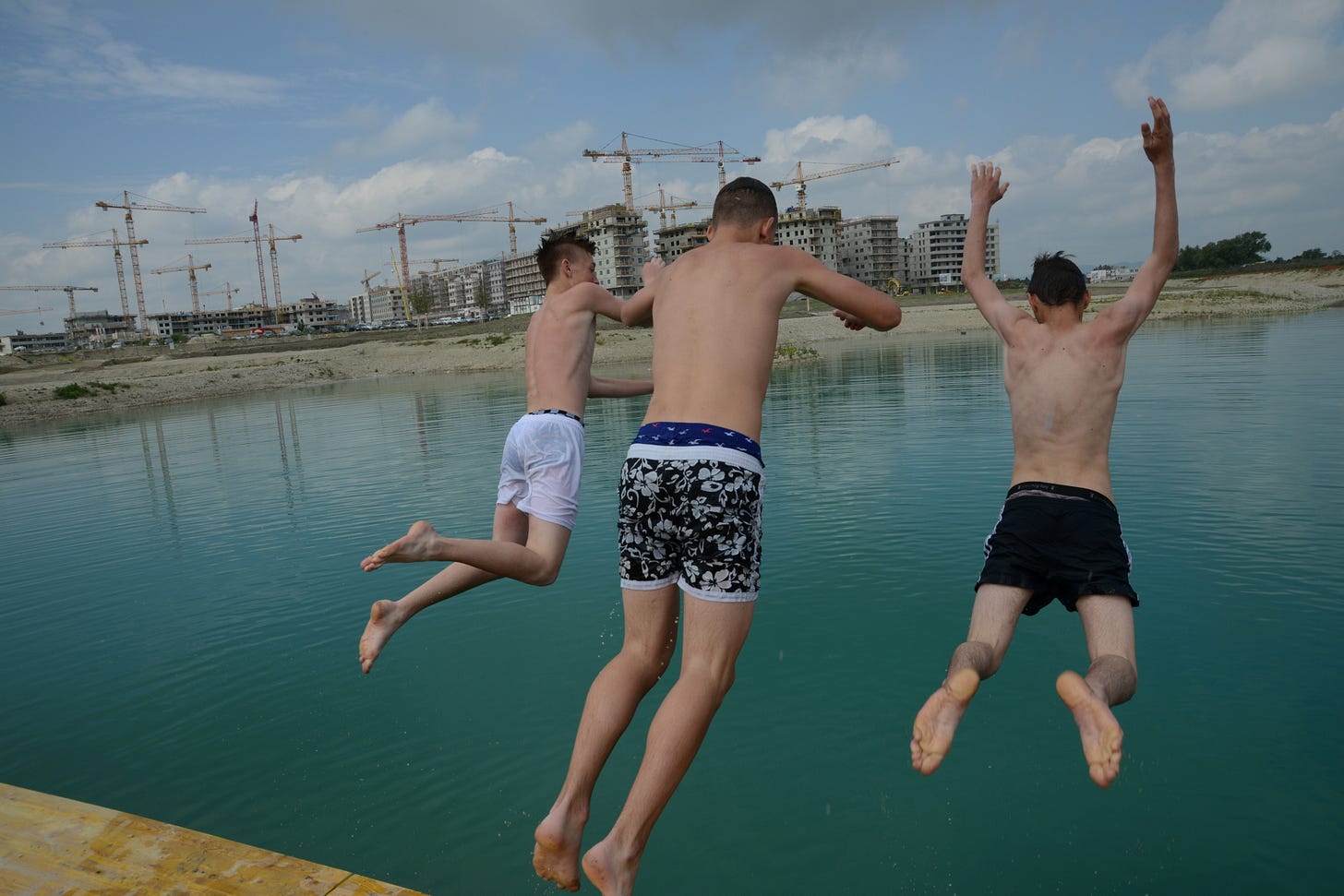Instantly!
In fascinating, never-before-seen images, the Wien Museum's "Instantly! Vienna Street Photography" is a history of the city in photographs
Servus!
Instantly! Vienna Street Photography is a new exhibition at the Wien Museum MUSA that captures 150 years of everyday life in the Austrian capital in 180 captivating images. Built out of the museum’s archival materials, the photographs selected by the exhibit’s curators, Frauke Kreutler and Anton Holze—some of which have never been shown before—date from around 1860 until the present. Taken as a piece, they show not only the ways in which the city has—or in many cases, hasn’t—changed, but also the development and evolution of Viennese street photography as an art form.
The photographs show Vienna to be a slower, sleepier, and until recently greyer city in contrast to larger metropolises like New York, Paris, and London. In the earliest photographs taken in the latter half of the nineteenth and early decades of the twentieth centuries, the dynamism of modern forms of transportation like the tram and the automobile contrast starkly with the leisurely pace at which people move about the urban landscape.
Not only unhurried in the sense of movement, Vienna is presented as a city which has changed at a slower pace both architecturally and in terms of the manner in which people use it. The photographs capture views and angles down streets or across squares that are largely recognizable and assimilable to the contemporary viewer. Institutions like the Naschmarkt, meanwhile, remain important hubs of commerce just as they were over 100 years ago, as a photograph by Moriz Nähr taken of an elderly fruits and vegetables seller in 1885 shows all too clearly.
Thank you for subscribing to the Vienna Briefing. If you know someone who might be interested in reading this newsletter, consider sharing it with them today.
The Vienna Briefing is a free newsletter. If you would like to support my work, you can send me a tip via PayPal.
Nightlife and Vienna after dark are unimportant subjects in Viennese street photography. It is not that Vienna had or has no nightlife—the theater, the cabaret, and so on—but rather that nightlife was not seen by photographers as important to the city’s understanding of itself. Vienna is not a city of sin but a city of leisure. Photographers turn their lens on the coffeehouse, where patrons read the newspaper, play chess, or hold court. The Viennese are captured swimming in the Danube, sunbathing, playing cards, or going to the funfair. These street photographs perpetuate the idea of a certain Viennese Gemütlichkeit, a feeling of warmth, friendless, and good cheer.

The exhibition’s earliest photographs are unfocused and unspecific. They are scenic images, snapshots of a moment on a square, street corner, or crosswalk that pull back and capture many characters and elements. In the postwar period, however, the focus of Viennese street photography shrinks as the photographer as artist begins to assert himself. Through framing and cropping, photographers decide for the viewer what it is they wish for them to see. The photography of Erich Lessing is particularly interesting in this regard, which scenes like a soccer match or protest shot in portrait as opposed to landscape, narrowing the viewer’s perspective.
Following the end of the Cold War, Vienna is no longer a backwater at the end of the West but a growing metropolis once more, and street photography is beginning to reflect that development. The birth and demands of Instagram in particular has meant that both the city and street photography have become more colorful, in stark contrast to the drabness of postwar Vienna. The recent desecration of Café-Konditorei Aida on Singerstrasse, gaudily refitted with social media in mind, may demonstrate another evolution in street photography: that form is dictating content, and not the other way around.
Instantly! Vienna Street Photography runs at the Wien Museum MUSA until October 23.
Bis bald!






